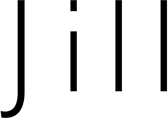
BEHIND THE SCENES:
BERLIN STUDIO VISIT – LUKAS HOFFMANN
October 12th 2020
Part I
I have been interested in the work of Lukas Hoffmann since his first group show eight years ago, where a flat side wall of a suburban Swiss apartment house rose blankly up from the foreground; black and white, crisp, formalist, austere, but awkwardly tender if not registering some kind of loss. He has worked continuously over the years with a large box camera – in a process that I tell people is akin to hunting for moments and forgotten views. He is a conceptual artist whose art is about places he finds when he is walking or riding a bicycle or pushing a baby carriage. Unseen corners of typical neighborhoods, places concrete and chain link fences get mashed up, tangled green areas outside suburban sprawl. This perspective – though certainly not the same visual language or eye – shares a kind of territory with Dutch conceptualist decades his senior, Jan Dibbets.
Hoffmann has been attracted from the beginning to anonymous spaces and architectural views we pass without a second glance: a break in the curb at the edge of parking by apartments, facades in shadow, a broken fence. Things in the wrong place because no one cared and threw them thoughtlessly, or because they fell that way without fanfare.
There is no causality in this work. It is just like that. Chaotic accumulations through his eye become elegant and spare. He looks at everyday places in familiar domestic situations. Generic Swiss towns on the edge of unkempt landscapes that tidy villages keep at bay.
My first vivid response to his work was in Zug, maybe 2012/13. I laugh now thinking how easy it was to jump on trains from Zurich; easy then to see shows of young artists. He made a radical twenty-four part work, photographs of a hedgerow that gave me goose bumps as I walked back and forth slowly taking in the nondescript aspect of this accumulation of tangles and knots you would normally pass by without taking notice.

Part II
Being there. He manages to raise the aesthetic nature of this abandoned row of shrubs that covers so much of the world we never stop to look. In his box camera the details sing, one meter after the next, a chorus so loud that I still remember the experience all these years later.
This work struck me as so important that when he showed me the dummy of the book that accompanies his current museum exhibition and it didn’t include this, I raised a huge fuss. He stopped the printing scheduled for the following day and revised the layout with the designer to include this 24-part silver gelatin print work as a leporello, an accordion-pleated insert. You will see a photo of it in this post. The book UNTITLED OVERGROWTH, is wonderful.
Going back to Berlin, I had not seen Lukas in a year or so, and he had taken a new studio, which we see here as a storefront, the entry where a big table sits between stacks of wrapped works.

The large box camera is nearby and he shows me again its structure and the massive negatives. There is a darkroom downstairs and he is working on a recent commission, the sculptural frame on the studio wall.
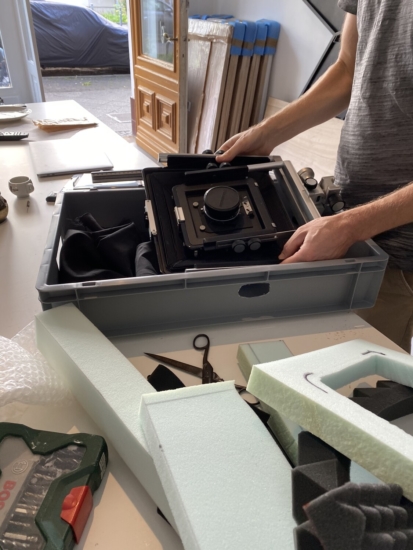
I want to mention here the Bronx Wall work as well with three spreads as details. He had a fellowship in New York over two years ago, and spent time wandering in Brooklyn and the Bronx for places that were his kind of spots, pushing his son in the stroller for hours on end. It was on one of these walks that he found the distressed walls you see here.
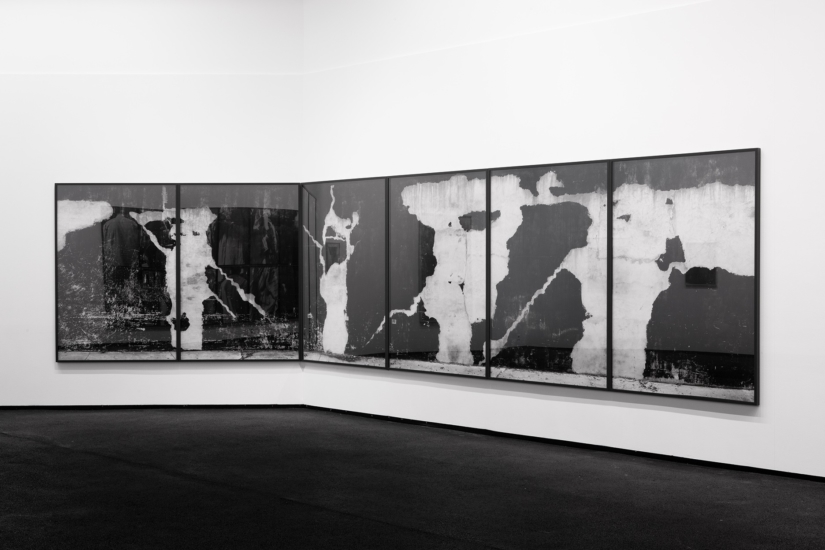
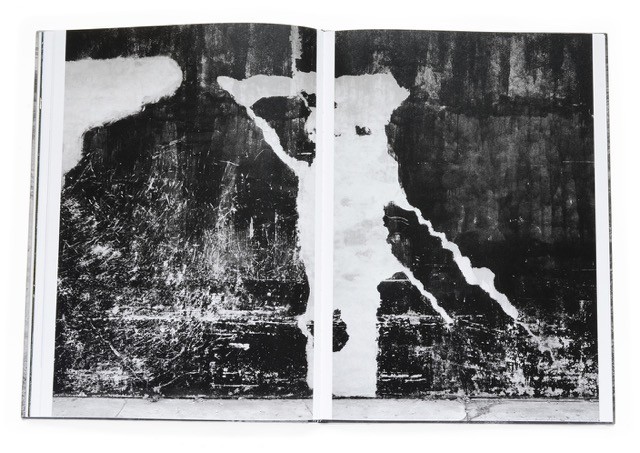
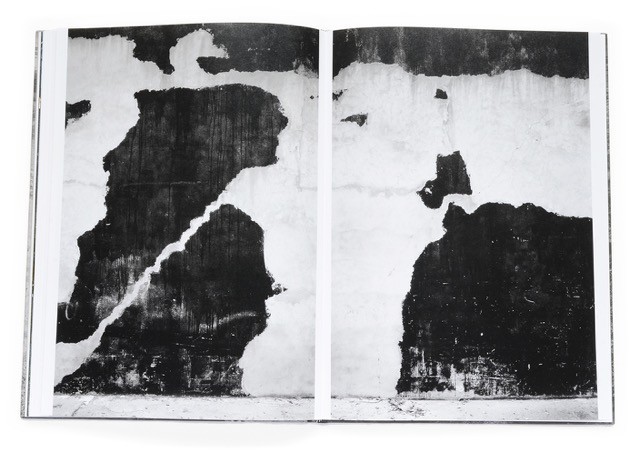
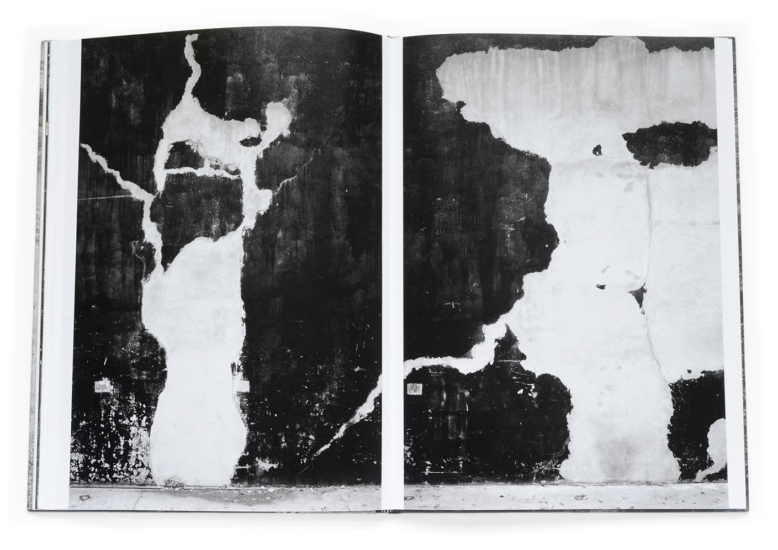
Following his return to Europe there is a new series of street photographs taken with almost a hidden camera held at his waist has the studied casualness of a crowd, where you sense the nature of someone’s character by the way their shorts graze a knee, or the way a purse is worn slightly akimbo. The sweep of motion is palpable along with the light of the sun and the street sounds.
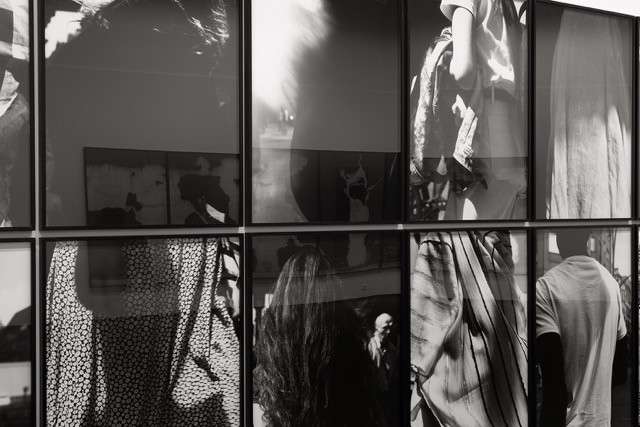
Part III
From UNTITLED OVERGROWTH
Dr. Matthias Haldemann is Director Kunsthaus Zug
Image Formation
On Lukas Hoffmann’s Recent Photographs
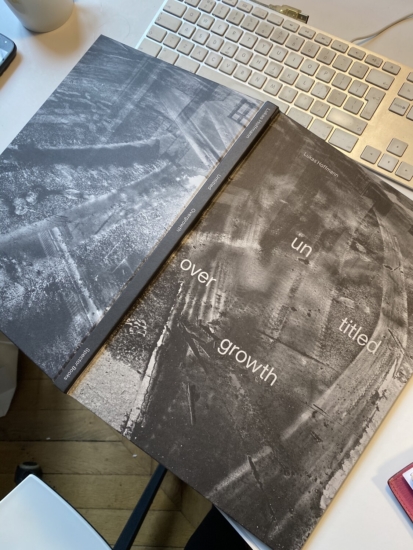
“A paradox is already inherent in the creation of these works. For instance, when the artist, during his expeditions on foot or by bicycle through the tangled urban outskirts of Berlin or New York, becomes aware of unassuming corners devoid of people – chilly facades, back courtyards, underpasses, construction sites, hedges run rampant, and wastelands. And when he later returns there with his large-format camera to take planned photographs. His circumspect treatment of the incidental, the provisional, the commonplace, the stagnant and the abandoned things with under-determined identity, continues during the developing process in his own darkroom, where he meticulously enlarges and frames each of the rigorously culled images.”
“The photographic constellations of visibility prove to be transitionally tipping intermediate products of reality and image, which have their own strong immediacy and presence. They exist directly in the here and now, showing what is really absent in the there and once, creating associations of inner, remembered images, yet are neither the one nor the other. In the experience of the seeing seen, the remembered, the imagined, and the animated created in an image in proper time, something open-yet-concealed appears: a possible accrual of being.”
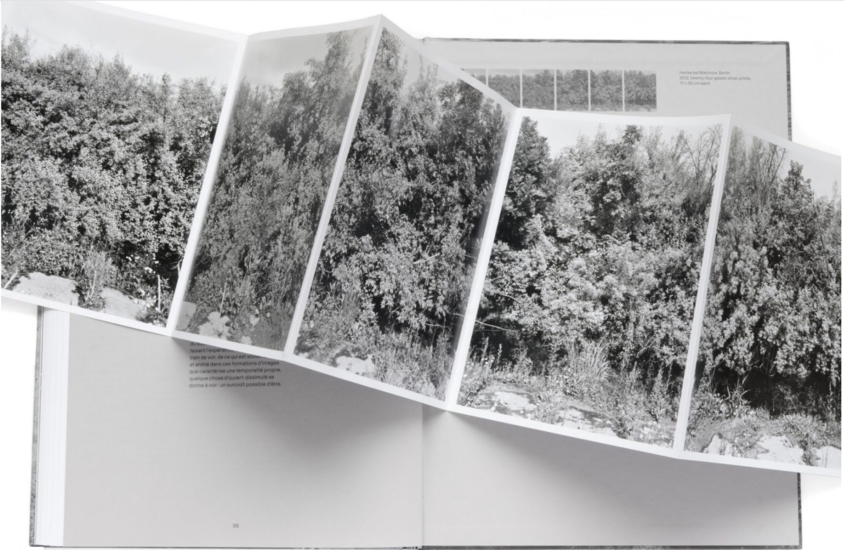
Part IV
From UNTITLED OVERGROWTH
Maren Lubbke-Tidow
Realms of Dissemblance
On the Pictorial Methods of the
Photographer Lukas Hoffmann
“When viewing this work, we intuitively know that anything “additional” or “more” that we may discern there comes from our capacity for imagination. Hoffmann’s work is very generally aligned to the project of (postwar) modernism, and he works with images in which the creative issues so evident in art during that period are now reappearing today.”
“Hoffmann’s project involves finding, in his medium, a productive way of dealing with this decisive paradigm of photography – while simultaneously developing a specific visual program that allows him to depart slightly from this very paradigm; or that at least allows it to recede into the background of perception. At any rate, we can definitely note that it is possible to name the referent in all of Lukas Hoffmann’s photographs. He uses an analogue large-format camera to take pictures in areas that we would designate as places of small industry, agriculture, housing developments. Or even just as abandoned or overgrown sites. Most recently, portraits have been added. I consider this decision on the part of the artist- namely, allowing the referent of his images to remain identifiable despite the moments of disorientation that are played with here – to be a decisive commitment to his medium, to photography. An approach to reading his images which asserts that the photographic apparatus only serves as a means to an end, so as to give his viewers something “else” – namely, a picture reminiscent of a drawing or painting – is not appropriate for his work, even if we are inclined to consider his pictorial works within the context of other forms of fine art.”
